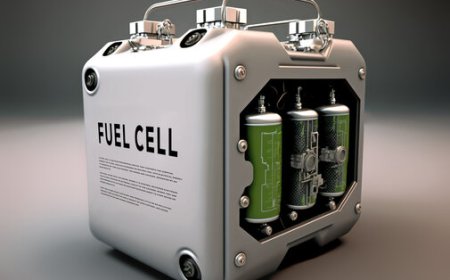Concrete Pile Foundations for Long-Lasting Structural Support
ow concrete pile foundations provide unmatched support for various construction projects. Learn their benefits, types, and role in long-term structural stability.

Introduction to Concrete Pile Foundations
When constructing buildings, bridges, or large-scale infrastructure, a strong foundation is essential to ensure stability and safety. In cases where the surface soil is not strong enough to support heavy loads, deeper foundations become necessary. Concrete pile foundations are among the most effective solutions in such scenarios.
These deep foundations transfer the load of a structure through weak soil layers and into stronger, more stable ground below. Their durability and reliability have made them a trusted choice in both commercial and residential projects, especially in areas with poor soil conditions or high moisture content.
Why Concrete Piles Are Used
Concrete piles are selected when surface soil cannot bear the weight of a structure. They are driven deep into the ground to reach load-bearing strata, such as bedrock or dense sand. This technique ensures the weight of the building is transferred to a solid base, reducing the risk of settlement or structural damage over time.
These piles are particularly beneficial in projects near water bodies, flood-prone zones, or locations with clay or peat soils. Whether used in new construction or as part of a repair solution, they provide long-lasting support and peace of mind for engineers and builders alike.
Key Benefits of Concrete Pile Foundations
Long-Term Durability
Concrete is resistant to rot, rust, and corrosion, making it suitable for long-term structural needs. It performs well under pressure and doesnt degrade quickly, even when exposed to water or fluctuating temperatures.
High Load-Bearing Capacity
Concrete piles can handle extremely heavy loads, which is crucial for high-rise buildings and industrial structures. Their strength ensures that buildings remain stable over decades.
Adaptability to Various Soil Conditions
Concrete piles can be installed in a wide range of soils, including soft clay, sand, and silt. This flexibility makes them ideal for diverse construction environments, from urban sites to coastal regions.
Minimal Ground Movement
Since piles transfer loads to deep, stable ground layers, there is minimal risk of ground movement affecting the structure. This stability is especially important in earthquake-prone areas or locations with expansive soils.
Types of Concrete Pile Foundations
Precast Concrete Piles
These are manufactured off-site and then transported to the construction location. They are typically square or round in shape and offer consistent quality due to controlled production conditions.
Precast piles are ideal when time is a factor because they are ready for immediate use upon delivery. However, they require specialized transport and equipment for installation.
Cast-In-Situ Concrete Piles
These are constructed directly on the job site. A hole is drilled or bored into the ground, then filled with reinforced concrete. This method allows for customization based on site conditions and load requirements.
Cast-in-situ piles are a practical choice when dealing with obstacles underground or when space is limited. They are also used in locations with varying soil strata.
Driven Concrete Piles
These piles are prefabricated and driven into the ground using hydraulic hammers. They are widely used for projects that demand immediate bearing capacity. The driving process helps compact surrounding soil, which adds to the overall stability.
Driven piles are often selected for bridge foundations, marine structures, and highways due to their strength and ease of installation.
The Construction Process
The method used to install concrete piles depends on the type selected and the specific site conditions. In general, the steps include:
-
Site Assessment: Engineers analyze soil properties to determine the best pile type and depth.
-
Pile Installation: Depending on the type, piles are either driven, cast in place, or bored.
-
Reinforcement: Steel reinforcements are often added to increase load-bearing capacity.
-
Concrete Pouring: High-quality concrete is poured to form the pile or fill the bored hole.
-
Curing: The concrete is allowed to cure, ensuring it reaches its full strength before the structure is built.
Applications Across Industries
Concrete pile foundations are used in many sectors due to their strength and adaptability.
Residential and Commercial Buildings
Multi-story apartment blocks, office towers, and commercial complexes benefit from deep foundations, especially in cities where land quality varies dramatically.
Industrial Structures
Warehouses, factories, and storage units often require piles to support heavy machinery and loads. Concrete piles provide the strength and endurance needed for these demanding environments.
Infrastructure and Transport
Bridges, railway lines, and highways are frequently built on concrete piles to ensure stability across rivers, valleys, and soft soil zones.
Marine and Coastal Construction
In harbors, docks, and seaside developments, concrete piles withstand water exposure and provide secure foundations in shifting sands and submerged soils.
Modern Advances in Piling Techniques
With advancements in technology, pile installation has become faster, cleaner, and more accurate. Engineers now use GPS-guided equipment and real-time monitoring tools to ensure precision. Innovations in concrete mix designs have also improved pile strength, durability, and resistance to environmental stress.
Additionally, noise and vibration control measures have been introduced, making the piling process suitable for use near sensitive structures like hospitals or schools. These developments enhance the appeal of concrete piles for a wide range of modern projects.
Challenges and Considerations
While concrete piles offer many advantages, certain challenges must be managed during installation. Noise and vibration during driven pile installation can disrupt nearby activities. For this reason, cast-in-situ methods are sometimes preferred in urban settings.
Another factor is cost. Although concrete piles are cost-effective in the long term, their initial investment can be higher compared to shallow foundations. However, this is often justified by the increased safety and reduced maintenance needs.
Proper planning, site analysis, and expert supervision are critical to avoiding errors such as misalignment, overloading, or material defects. Working with experienced contractors ensures a smooth and effective piling process.
Custom Solutions for Complex Projects
Every construction site has its unique requirements. Factors like soil type, structure size, environmental impact, and project timelines all influence the choice of piling method. Thats why many developers prefer working with specialists who offer tailored services.
For example, custom mini piling solutions available at EPF Mini Piling cater to complex scenarios where traditional piling methods are not feasible. These solutions are ideal for sites with limited access, low headroom, or environmental restrictions. By combining expertise with innovative techniques, such services ensure stability even in the most challenging conditions.
Conclusion: Building on a Strong Foundation
Concrete pile foundations continue to be the backbone of safe, long-lasting structures around the world. Their ability to bear immense loads, adapt to various soil types, and stand up to harsh conditions makes them a preferred choice for engineers and builders.
Whether youre planning a residential development, an industrial facility, or a public infrastructure project, investing in the right foundation is key. With the proper design and execution, concrete piles provide the support necessary for structures to stand the test of time.
For projects requiring specialized attention, working with expert contractors who understand the unique demands of your site can make all the difference. From traditional piling to innovative mini piling services, the right foundation ensures your structure remains strong, secure, and stable for decades.





























